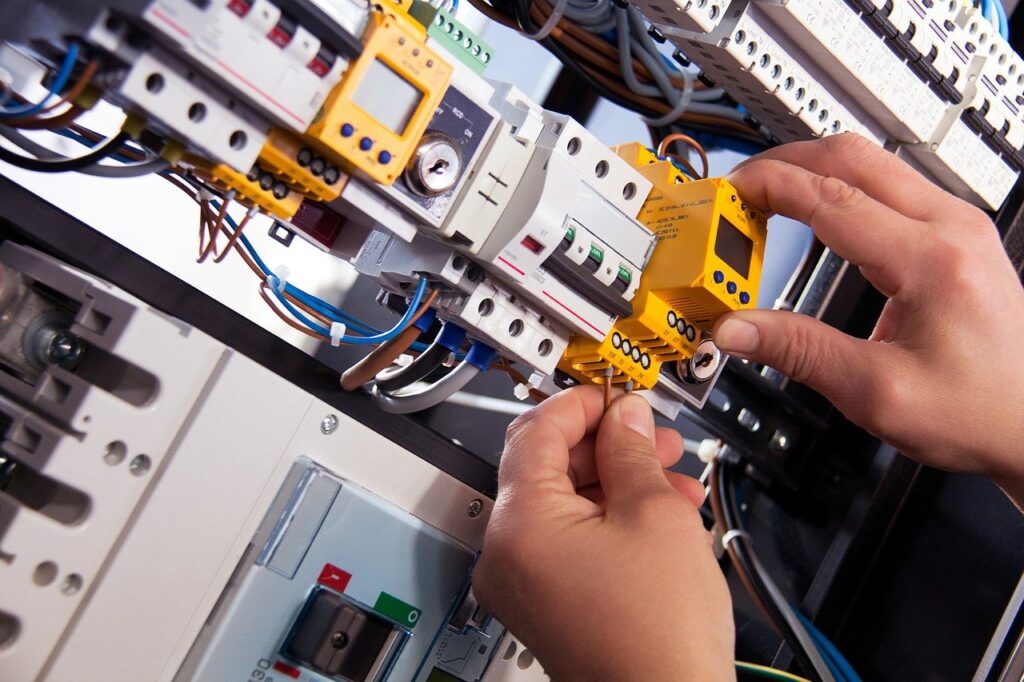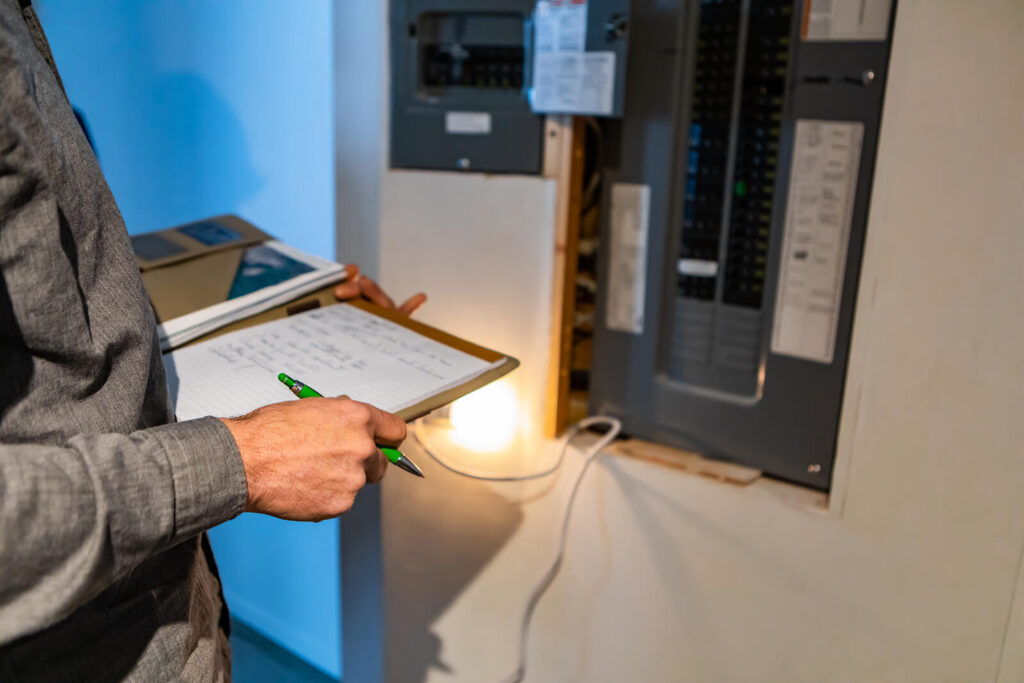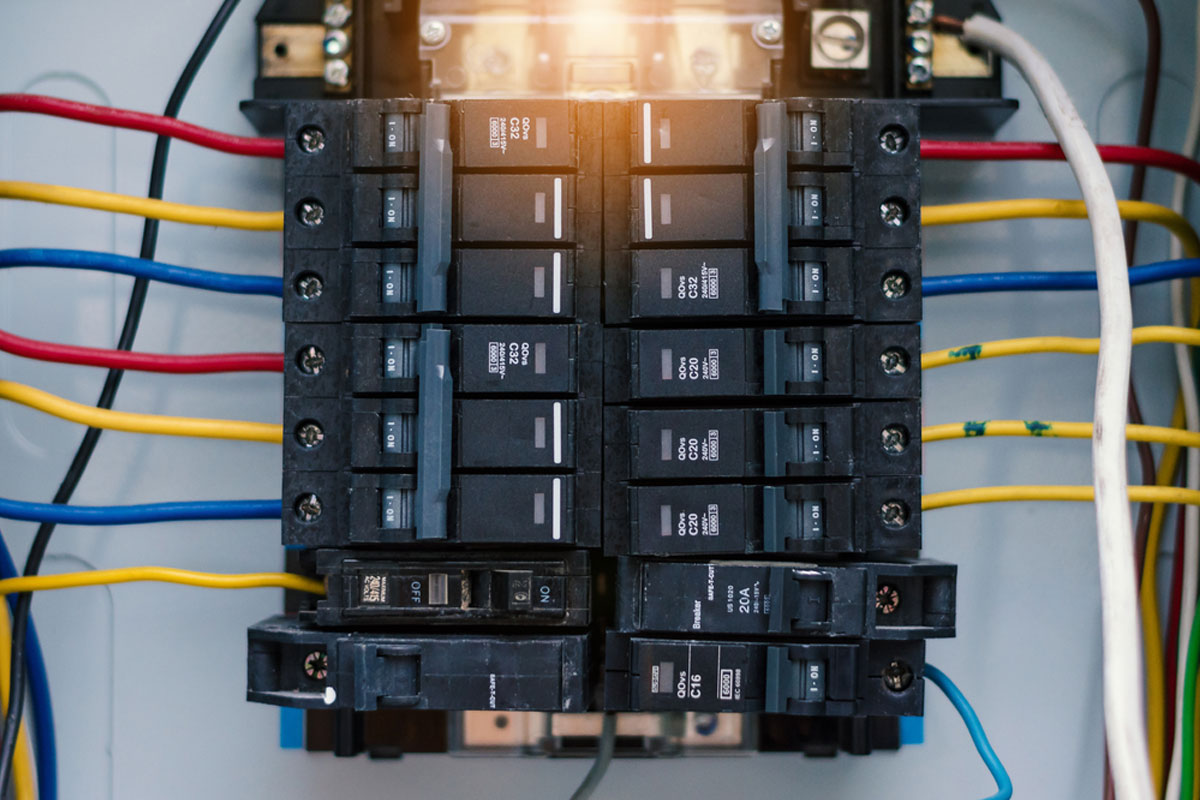Circuit breakers are an essential component of any electrical system, serving to protect both the system and its users from potential hazards. However, like any other mechanical device, circuit breakers can experience issues that may disrupt the flow of electricity or even pose safety risks. In this article, we will discuss some of the most common circuit breaker issues and provide guidance on how to diagnose and resolve them.
Understanding Circuit Breakers
Before we delve into the specific issues that can affect circuit breakers, it’s important to have a basic understanding of how they function and their role in your home’s electrical system.
Imagine this: you’re sitting in your cozy living room, enjoying the soft glow of your favorite lamp. Suddenly, you hear a loud pop and the lights go out. What just happened? Well, chances are, your trusty replacement breaker just did its job.
The Role of Circuit Breakers in Your Home
Circuit breakers act as safety devices that automatically shut off the flow of electricity when they detect an abnormality in the circuit. This could be due to excessive current, a short circuit, or a ground fault. By disrupting the flow of electricity, circuit breakers help prevent electrical fires, damage to appliances, and electrocutions.
Think of circuit breakers as the guardians of your electrical system. They tirelessly monitor the flow of electricity, ready to spring into action at a moment’s notice. When they sense trouble, they swiftly intervene, cutting off the power supply and saving the day.

Basic Components of a Circuit Breaker
A typical circuit breaker consists of three main components: the switch, the trip unit, and the contacts. Let’s take a closer look at each of these components.
The switch is like the gatekeeper of the circuit breaker. It allows you to manually turn the circuit breaker on or off, giving you control over the flow of electricity. With a flick of a switch, you can bring light to a room or plunge it into darkness.
Next up is the trip unit. This is the brain of the circuit breaker, responsible for detecting and responding to abnormal electrical activity. It’s like a vigilant detective, constantly on the lookout for any signs of trouble. When it detects an abnormality, it sends a signal to the contacts.
The contacts, the final piece of the puzzle, are responsible for opening and closing the circuit. When the trip unit detects a problem, it sends a signal to the contacts, telling them to break the circuit and stop the flow of electricity. It’s like a superhero swooping in to save the day, preventing any further damage or danger.
So, the next time you flip a switch or plug in an appliance, take a moment to appreciate the unsung hero in your electrical system – the circuit breaker. It’s there, silently protecting you and your home from potential electrical hazards.
Identifying Common Circuit Breaker Issues
Now that we have a solid understanding of the basics, let’s move on to identifying some of the most common issues that can arise with circuit breakers.
Frequent Tripping
One of the most prevalent issues with circuit breakers is frequent tripping. If your circuit breaker keeps shutting off, it could be an indication of an overloaded circuit or a short circuit. An overloaded circuit occurs when too many devices are plugged into a single circuit, causing it to exceed its maximum capacity. A short circuit, on the other hand, happens when the hot wire comes into contact with the neutral wire, creating a low-resistance path that results in excessive current flow.
Frequent tripping can be frustrating and inconvenient, as it disrupts the flow of electricity in your home. It is important to address this issue promptly to prevent further damage to your electrical system. In the case of an overloaded circuit, redistributing the electrical load by unplugging devices or appliances from the overloaded circuit can help resolve the problem. Alternatively, you may need to add additional circuits to accommodate the increased power demand.
Overloaded Circuit
An overloaded circuit can cause your circuit breaker to trip repeatedly. This can be a sign that the circuit is being pushed beyond its limits, which can lead to overheating and potential fire hazards. It is important to identify and address the cause of the overload to ensure the safety of your electrical system.
When dealing with an overloaded circuit, it is crucial to consider the electrical load of each device or appliance connected to the circuit. Some devices, such as air conditioners or space heaters, consume a significant amount of power and can easily overload a circuit if used simultaneously with other high-power devices. To resolve this issue, you should consider redistributing the electrical load by unplugging devices or appliances from the overloaded circuit. It is also a good practice to spread the load across multiple circuits to prevent overloading.
Short Circuit
A short circuit is a more serious issue that requires immediate attention. In most cases, a short circuit is caused by faulty wiring, damaged insulation, or the presence of moisture. When a short circuit occurs, a large amount of current flows through the circuit, causing the circuit breaker to trip to prevent further damage or potential hazards.
Identifying and addressing a short circuit can be challenging, as it requires careful inspection of the wiring system. If you suspect a short circuit, it’s important to isolate the affected circuit by turning off the power and investigating the cause. This may involve checking for damaged or exposed wiring, inspecting electrical outlets and switches, and ensuring that all connections are secure. In some cases, you may need to consult a qualified electrician to repair the damaged wiring and ensure the safety of your electrical system.

Ground Fault
A ground fault occurs when the hot wire comes into contact with a grounded surface or conductor. This issue is often a result of damaged insulation or faulty appliances. Ground faults can be dangerous, as they can lead to electric shock or electrocution.
If you suspect a ground fault, it’s important to isolate the affected circuit and investigate the cause. This may involve checking for damaged insulation, inspecting electrical outlets and switches, and testing appliances for faults. Repair or replace any faulty components to restore proper functionality and ensure the safety of your electrical system.
Remember, when dealing with circuit breaker issues, it is always important to prioritize safety. If you are unsure or uncomfortable with handling electrical repairs, it is best to consult a qualified electrician who can diagnose and resolve the problem safely and efficiently.
Diagnosing Circuit Breaker Problems
Now that we’ve identified some common circuit breaker issues, let’s discuss how to diagnose them accurately and safely.
Diagnosing circuit breaker problems requires a systematic approach and the use of specific tools. By following the step-by-step guide below, you can effectively troubleshoot and identify the root cause of the issue.
Tools Needed for Diagnosis
Before you begin diagnosing circuit breaker problems, it’s important to gather the necessary tools. These may include a digital multimeter, an insulation tester, a non-contact voltage tester, and a screwdriver.
A digital multimeter is a versatile tool that can measure voltage, current, and resistance. It is essential for accurately testing various electrical parameters. An insulation tester, on the other hand, is specifically designed to measure the resistance of insulation materials. This tool helps identify any faults in the insulation that may be causing the circuit breaker to trip. A non-contact voltage tester is used to check if power is reaching the circuit without the need for direct contact, ensuring safety during the diagnostic process. Lastly, a screwdriver is necessary for accessing and manipulating the circuit breaker.
Safety Precautions When Diagnosing
Electrical work can be dangerous, so it’s crucial to observe the proper safety precautions when diagnosing circuit breaker problems. Always ensure that the power to the affected circuit is turned off before carrying out any repairs or inspections. This can be done by switching off the corresponding breaker in the main electrical panel. Additionally, use insulated tools to minimize the risk of electric shock and wear protective gear such as gloves and safety glasses.
It is also important to remember that if you are not confident or experienced in working with electrical systems, it is best to seek professional assistance. Hiring a licensed electrician ensures that the diagnosis and repair are done safely and correctly.

Step-by-Step Guide to Diagnosing Issues
To diagnose circuit breaker problems, follow these steps:
- Observe any visible signs of damage or burning, such as discoloration or a burning smell. These may indicate a fault within the circuit breaker. Pay close attention to the breaker itself, the wiring connected to it, and any nearby electrical components.
- Reset the tripped circuit breaker. If it immediately trips again, there may be an underlying issue. It is important to note that repeatedly resetting a tripped breaker without addressing the root cause can lead to further damage or even electrical fires.
- Use a non-contact voltage tester to check if power is reaching the circuit. Place the tester near the wires or terminals connected to the circuit breaker and observe if it detects any voltage. If there’s no power, you may have a wiring problem or a faulty breaker.
- Measure the resistance of the wiring using an insulation tester. This involves disconnecting the circuit breaker from the power source and attaching the tester to the circuit’s wires. The insulation tester will apply a high voltage to the wires and measure the resistance. A high resistance reading indicates good insulation, while a low resistance reading suggests insulation breakdown or a short circuit.
- If the insulation resistance is within the acceptable range, you can perform a more detailed analysis using a digital multimeter. This tool can help you identify the specific component or wire that’s causing the problem. Start by testing the voltage across the circuit breaker terminals to ensure it is receiving power. Then, proceed to test the voltage at various points along the circuit to pinpoint any voltage drops or irregularities.
By following these steps and utilizing the appropriate tools, you can effectively diagnose circuit breaker problems and take the necessary steps to resolve them. Remember to always prioritize safety and consult a professional if you are unsure or uncomfortable with any aspect of the diagnostic process.
Solutions for Common Circuit Breaker Problems
Now that you have diagnosed the issue with your circuit breaker, it’s time to discuss potential solutions.
Resetting a Tripped Breaker
If your circuit breaker trips, the first thing you should do is reset it. To do this, locate the tripped breaker and firmly switch it off and then back on. However, if the breaker trips repeatedly after being reset, you should investigate further to determine the cause.
Replacing a Faulty Breaker
If you have identified a faulty circuit breaker as the cause of the problem, it may need to be replaced. This should only be done by a qualified electrician to ensure the replacement is done correctly and safely.
When to Call a Professional
While minor circuit breaker issues can sometimes be resolved by homeowners, there are instances where a professional electrician should be called. If you encounter any of the following situations, it’s best to seek professional help:
- Recurring issues that persist after resetting the breaker
- Visible signs of damage, burning, or corrosion
- Any suspected wiring or electrical faults that require repairs
- Inadequate knowledge or experience in electrical work
By following these guidelines, you can diagnose and address common circuit breaker issues, ensuring the safety and reliability of your home’s electrical system. Remember, always prioritize safety and consult a professional when in doubt.
Related: Programmable Light Switches for Energy-Efficient Lighting

